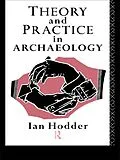In this latest collection of his articles, of which seven are written especially for this volume, Ian Hodder captures and continues the lively controversy of the 1980s over symbolic and structural approaches to archaeology. The book acts as an overview of the developments in the discipline over the last decade; yet Hodder's brief is far wider. His aim is to break down the division between the intellectual and the "dirt" archaeologist to demonstrate that in this discipline more than any other, theory must be related to practice to save effectively our rapidly diminishing heritage.
Zusammenfassung
This volume brings together the work of 32 scholars from 13 countries -- investigations of children learning 15 different languages, in some instances more than one at a time. The scope of this work -- as broad as it is -- only partially represents the research interests and approaches of the more than 350 scholars from 34 countries who contributed papers or posters to the Sixth International Congress for the Study of Child Language. This investigative power and diversity are, for the most part, focused on topics and issues of modern day child language research that have been under discussion for the last 30 years or so. Some even go beyond that in early diary studies and philosophers' speculations. While the issues are mainly familiar ones, the 17 chapters contribute to the advancement of child language study in several specific ways. They: * represent current theoretical frameworks, both bringing the insights of the theories to the interpretation of language development and testing tenets or implications of the theories with child language data; * contribute substantively to the crosslinguistic study of child language, reflecting both the linguistic diversity of the authors themselves and a recent major shift in the approach to child language study; * build on the now considerable body of knowledge about children's language, both adding to information about the basic systems of phonology, syntax, and semantics, and extending beyond to explore aspects of narrative and literacy development, language acquisition by bilingual and atypical children, and language processing; and * contain hints of new directions in child language study, such as increased attention to the impact of phonology on other language systems. Taken as a whole, this volume reflects the current strength of crosslinguistic research, the application and testing of new theoretical developments, a new legitimacy of language disorder data, and a new appeal to the descriptive possibilities of language processing models. In addition, there is a theme that runs through many of the chapters and points the way for important research in the future: the role of prosody in the acquisition of various language structures and systems.
Inhalt
Preface; 1. Theory practice and praxis; PART A. SYMBOLIC AND STRUCTURAL ARCHAEOLOGY 2. Symbolism, meaning and context 3. Symbols in action (1982) 4. Burials, houses, women and men in the European Neolitihic (1984); PART B. SOME IMPLICATIONS OF THE NEW IDEAS 5. Post-processual archaeology 6. Theoretical archaeology: a reactionary view (1982) 7. Archaeology in 1984 (1984) 8. Politics and archaeology in the World Archaeological Congress 1986 (1986); PART C. DEBATE AND RE-EVALUATION 9. The processual reaction: You have gone too far 10. Towards radical doubt: a dialogue 11. The post-processual reaction: You haven't gone far enough 12. Towards a coherent archaeology.
